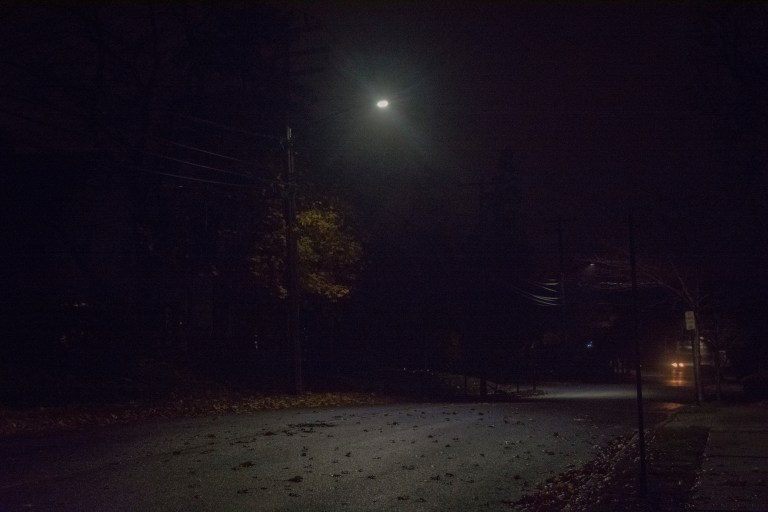
A lawsuit filed against the Village of Great Neck regarding LED lights will not be dismissed, a Nassau County Supreme Court judge wrote on Wednesday, ordering the two parties to meet for a preliminary conference.
Acting Nassau County Supreme Court Justice Denise Sher said that while Youngblood’s claims of “trespass” related to the LED light shining near her home will not move forward, as lights are typically deemed “intangible intrusions,” there can be an argument for “private nuisance.”
“….The Court finds that plaintiff has stated causes of action against defendants that fall within a cognizable legal theory for private nuisance, New York Public Buildings Law 143(2)(a), fraud, permanent injunction and 42 U.S.C.A. S 1983,” Sher wrote in her court order. “Plaintiff has failed to state a cause of action for trespass.”
Sher further ordered that both parties attend a preliminary conference on Oct. 1 to schedule discovery proceedings.
A discovery proceeding is a pre-trial procedure where parties “ask each other to produce documents, sit for a deposition or answer formal written questions,” according to the Reporters Committee for Freedom of the Press.
While it is a pre-trial procedure, the case is not guaranteed to go to trial as a defendant can appeal the denial or move for the judge to reconsider.
Sher also declined to issue a preliminary injunction on the LED light.
Judith Youngblood, a Colgate Road resident, had sued the Village of Great Neck and its Board of Trustees for nearly $1 million on Feb. 7 and sought to get an injunction against a LED light fixture being installed and active within 200 feet of her home.
Court documents filed by Tamara Harris, her attorney, allege the defendants “engaged in an intentional misrepresentation of material existing fact” by saying the lights could be shielded and would not be excessively bright, and that Youngblood did not realize it before the installation of lights near her home on Dec. 8.
The papers also argue that the harm from the lights deprived Youngblood of the use of her property without due process, as guaranteed by the 14th Amendment of the U.S. Constitution.
Harris was not immediately available for comment on Friday.
Andrew Preston of Bee, Ready, Fishbein, Hatter & Donovan LLP, who is representing the village, had filed documents trying to dismiss the case.
In court papers, Preston argued that it is the village’s core mission to “preserve the safety and welfare of village residents and visitors” and that the Court of Appeals “has recognized the self-evident proposition that government should not be prohibited from performing its core missions.”
Preston also said a street lamp is “not a substantial interference,” nor is it “unreasonable in character,” and that if the village was mandated to turn off individual streetlights, it could create “an unsafe condition to the general public and expose the Village to further tort liability.”
Preston also notes that the individual defendants have “absolute legislative immunity” and thus should be dismissed from the case.
When asked for comment, Preston said, “The village does not comment on pending litigation.”
The case followed the village’s installation of more than 800 street fixtures with LED bulbs, following presentations and public hearings. Officials have previously described the installation as a way to improve safety, replace failing lights, and reduce energy costs.
According to the American Medical Association, some LED lights emits high amounts of blue light that appears white and can, in turn, create nighttime glare, suppress melatonin at night, and affect the circadian rhythm.
Among is recommendations are minimizing blue right light, shielding fixtures, and using 3,000K lights and lower.
The Illuminating Engineering Society agrees with the importance of properly installing LED lights with “proper optics and shielding to reduce glare and light trespass.”
The society, however, argues that the 3,000 K threshold is not based on science and that “melanopic content” should be measured instead before conclusions are made.







Acting Nassau County Supreme Court Justice Denise Sher said that while Youngblood’s claims of “trespass” related to the LED light shining near her home will not move forward, as lights are typically deemed “intangible intrusions,” there can be an argument for “private nuisance.” ….,
I was talking to someone just now about a music CD that I own and they told me that they own the digital copy of the same CD. I argued how it’s not the same thing and they brought up a Very Good Point. Because it is “Intangible”, does that make it any less music than a hard copy CD ?? Same thing with DVDs, Blu-Ray, Vinyl, etc. They are no less tangible than a physical copy of said art. The Same argument can be made for lighting…, If it’s visible to the naked eye and unwanted, it is indeed A Very Tangible Intrusion !!!
Furthermore, if it is not visible to the naked eye however, causes damage to the health of human beings as well as flora and fauna then, it should also be considered Tangible. (Unseen UV light).
I just wish that Justice Denise Sher could understand this principle or that Judith Youngblood’s attorney Tamara Harris could argue this point.
We are monitoring this story very closely in Chicago. Keep fighting, Judith Youngblood. The light in front of your adorable home is a monstrosity, just like all the other LEDs they are installing mindlessly throughout the world. This whole 3000K+ blue-rich white LED craze is a blight to humanity. They are disturbing and will end up making every living thing in the world sick. You are not alone. We are cheering for you!